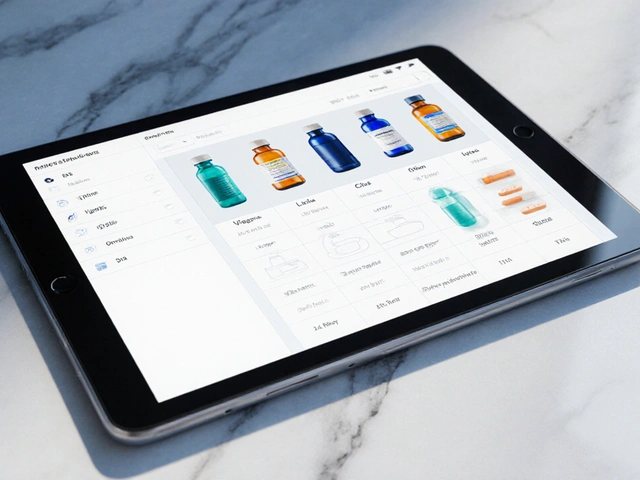Soluble Fiber: Benefits, Uses, and How It Impacts Your Health
When talking about soluble fiber, a type of dietary fiber that dissolves in water to form a gel‑like substance. Also known as viscous fiber, it slows digestion, helps nutrients absorb more evenly, and can be found in oats, beans, fruits and psyllium.
One of the biggest reasons people hunt for soluble fiber is its effect on cholesterol, the waxy substance that circulates in blood and can clog arteries when levels rise. When you eat soluble fiber, it binds to bile acids in the gut, forcing the liver to use more cholesterol to make fresh bile. This natural swap lowers LDL (bad) cholesterol and raises HDL (good) cholesterol, a direct soluble fiber‑cholesterol interaction that many heart‑health guidelines highlight.
Beyond cholesterol, soluble fiber plays a key role in managing blood glucose, the amount of sugar circulating in the bloodstream after meals. The gel formed by soluble fiber slows carbohydrate breakdown, leading to a gentler rise in glucose after eating. This effect not only helps prevent spikes that strain the pancreas, it also improves insulin sensitivity, a cornerstone of type 2 diabetes control.
The gut itself gets a boost from soluble fiber because it acts as food for the gut microbiome, the community of billions of bacteria living in your intestines. Fermentation of soluble fiber produces short‑chain fatty acids like butyrate, which feed colon cells, reduce inflammation, and may even signal the brain to curb appetite. In short, soluble fiber fuels a healthier microbial balance, which in turn supports digestion, immunity and mood.
All these pathways tie back to heart disease, the leading cause of death worldwide, driven by clogged arteries, high blood pressure and inflammation. By lowering LDL cholesterol, smoothing blood‑sugar swings, and dampening gut‑derived inflammation, soluble fiber creates a triple‑threat shield against heart attacks and strokes. That’s why cardiologists often recommend a daily intake of 5‑10 grams of soluble fiber for patients at risk.
Practical Ways to Add More Soluble Fiber to Your Day
Start your morning with a bowl of oatmeal topped with fresh berries, or stir a spoonful of psyllium husk into your smoothie. Swap white rice for a quinoa‑bean mix at lunch, and choose whole‑fruit snacks instead of juice. Even soups and sauces can benefit from a splash of pureed lentils or carrots, adding texture and a fiber boost without extra effort.
Remember, the goal isn’t just to hit a number on the label; it’s to keep the fiber moving through your system. Pair soluble sources with plenty of water, and give your gut time to adjust. If you jump from zero to high intake too fast, you might experience bloating – a small price for the long‑term payoff in heart health, weight control and steady energy.
Below you’ll find a curated list of articles that dive deeper into each of these benefits, compare specific supplements, and give step‑by‑step guides on how to choose the right products for your lifestyle. Whether you’re curious about cholesterol‑lowering pills, diabetes meds, or gut‑supporting probiotics, our collection links the science of soluble fiber to real‑world treatment options you may already be exploring.

How Fiber Prevents Poor Food Absorption
- Date: 27 Sep 2025
- Categories:
- Author: David Griffiths
Explore how dietary fiber supports digestion, boosts gut microbiota, and stops bad nutrient absorption. Practical tips and a clear soluble‑vs‑insoluble comparison included.



